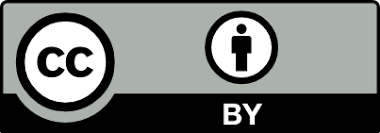Abstract
The aim of this study was to investigate the effects
of washing with tap water and different cooking process on residue levels of
shrimp treated with 4-hexylresorcinol. Dipping solutions of 4-hexylresorcinol in five different concentrations
(5-10-50-100-500 ppm) were prepared using distilled water. The shrimps were
dipped into the solutions for 1-5-10- 30 min.
Half of the samples were washed with tap water. The residue level of
4-hexylresorcinol in all samples were analysed after frying and boiling process. The 4-hexylresorcinol
residual levels in unwashed and washed raw, fried and boiled shrimp
samples showed linear increases with increasing dipping
time and concentration.
The best results were obtained for the treatment of 5 and 10 ppm for 1-5-10-30
min.
References
- Erkan, N., Özden, Ö., Üçok Alakavuk, D., Tosun, Y.Ş., Varlık, C. & Baygar, T. (2007). İstanbul’da Satılan Karideslerin Sodyum Metabisülfit Düzeyinin Tespiti. Journal of FisheriesSciences.com, 1(1), 26-33.
- Dayal Syama, J., Ponniah, A.G., Imran Khan, H., Madhu Babu, E.P., Ambasankar, K. & Kumarguru Vasagam, K.P. (2013). Shrimps – a Nutritional Perspective. Current Science, 104(11), 1487-1491.
- FAO (2014). The State of World Fisheries and Aquaculture, Opportunities and challenges. Rome 2014 e-ISBN 978-92-5-108276-8 http://www.fao.org/3/a-i3720e.pdf (accessed 10/03/2016)
- Food and Drug Regulations 1078 (1998). Regulations Amending the Food and Drug Regulations (1078), 1998-1599 15 September, 1998. http://publications.gc.ca/gazette/archives/p2/1998/1998-09-30/pdf/g2-13220.pdf (accessed 10/03/2016)
- GB 2760-1996 (1996). Food Additives Hygiene Standard. Published by Ministry of Public Health, PR China.
- Guandalini, E., Ioppolo, A., Mantovani, A., Stacchini, P. & Giovannini, C. (1998). 4-hexylresorcinol as Inhibitor of Shrimp Melanosis: Efficacy and Residues Studies; Evaluation of Possible Toxic Effect in a Human Intestinal in Vitro Model (caco-2); Preliminary Safety Assessment. Food Addit Contam Part A., 15(2), 171-180.
- Heu, M.S., Kim, J.S., Shahidi, F. (2003). Components and nutritional quality of shrimp processing by-products. Food Chemistry, 82, 235-242.
- Iyengar, R., Bohmont, C.W. & Mc Evily, A.J. (1991). 4-Hexylresorcinol and Prevention of Shrimp Blackspot: Residual Analyses. Journal of Food Composition and Analysis, 4, 148-157.
- JECFA (1995). Evaluation of Certain Food Additives and Contaminat. 44th FAO/WHO Expert Committee on Food Additives. WHO Technical Report Series, 859, pp. 1-53.
- Nirmal, P.N. & Benjakul, S. (2010). Effect of Catechin and Ferulic Acid on Melanosis and Quality of Pacific White Shrimp Subjected to Prior Freeze–Thawing During Refrigerated Storage. Food Control, 21(9), 1263-1271.
- Nirmal, P.N. & Benjakul, S. (2011a). Use of Tea Extracts for Inhibition of Polyphenoloxidase and Retardation of Quality Loss of Pacific White Shrimp During Iced Storage. LWT-Food Science and Technology, 44(4), 924-932.
- Nirmal, P.N. & Benjakul, S. (2011b). Inhibition of Melanosis Formation in Pacific White Shrimp by the Extract of Lead (Leucaena leucocephala) Seed. Food Chemistry, 128(2), 427-432.
- Martínez-Alvarez, O., Montero, P. & Gómez-Guíllén, M.C. (2005). Controlled Atmosphere as Coadjuvant to Chilled Storage for Prevention of Melanosis in Shrimps (Parapenaeus longirostris). European Food Research and Technology, 220, 125-130.
- Martínez-Alvarez, O., López-Caballero, M.E., Montero, P. & Gómez-Guíllén, M.C. (2007). Spraying of 4-hexylresorcinol Based Formulations to Prevent Enzymatic Browning in Norway Lobsters (Nephrops norvegicus) During Chilled Storage. Food Chemistry, 100, 147-155.
- Mayer, A.M. (2006). Polyphenol Oxidases in Plants and Fungi: Going places? A review. Phytochemistry, 67, 2318-2331.
- Mendes, R., Pestana. J. & Pestana, C. (2006). Changes in 4-hexylresorcinol Residues During Processing of Deepwater Pink Shrimp (Parapenaeus longirostris). European Food Research and Technology, 223, 509-515.
- Montero, P., López-Caballero, M.E. & Pérez-Mateos, M. (2001). The Effect of Inhibitors and High Pressure Treatment to Prevent Melanosis and Microbial Growth on Chilled Prawns (Penaeus japonicus). Journal of Food Science, 66, 1201-1206.
- Montero, P., Martinez-Alvarez, O. & Gómez-Guillén, M.C. (2004). Effectiveness of Onboard Application of 4-Hexylresorcinol in Inhibiting Melanosis in Shrimp (Parapenaeus longirostris). Journal of Food Science, 69, C643-C647.
- Montero, P., Martinez-Alvarez, O., Gomez-Guillen, M.C., Zamarano, J.P. & Alique, R. (2005). Melanosis Inhibition and 4-hexylresorcinol Residual Levels in Deepwater Pink Shrimp (P. logirostris) Following Various Treatments. European Food Research and Technology, 223(1), 16-21.
- Regulation (EC) No 1333/2008 (2008). Regulation (EC) no 1333/2008 of the European parliament and of the council of 16 December 2008 on food additives. Official Journal of the European Union, L354/16-L354/33.
- Thepnuan, R., Benjakul, S. & Visessanguan, W. (2008). Effect of Pyrophosphate and 4-hexylresorcinol Pretreatment on Quality of Refrigerated White Shrimp (Litopenaeus vannamei) Kept under Modified Atmosphere Packaging. Journal of Food Science, 73(3), S124-S133.
- Selçuk, A. & Özden, Ö. (2014a). A Rapid HPLC Method for Determination of 4-hexylresorcinol Residues in Shrimp. Journal of FisheriesSciences.com, 8(2), 131-138.
- Selçuk, A. & Özden, Ö. (2014b). Mathematical Modelling of 4-hexylresorcinol Residue to Ensure Consumer Safety. Quality Assurance and Safety of Crops & Foods, 6(4), 425-430.
- Zamorano, J.P., Martinez-Alvarez, O., Montero, P., Gomez-Guillen, M.C. (2009). Characterisation and Tissue Distribution of Polyphenol Oxidase of Deepwater Pink Shrimp (Parapenaeus longirostris). Food Chemistry, 112,104-111.
- 89/107/EEC (1989). Council Directive of 21December 1988 on the approximation of the laws of the Member States concerning food additives authorized for use in foodstuffs intended for human consumption. 1989L0107 — EN — 10.09.1994 — 001.001 — 1-10.
- 95/2/EC (1995). European Parliament and Council Directive No 95/2/EC of 20 February 1995 on food additives other than colours and sweeteners. 1-53.
- 2003/89/EC (2003). Directive 2003/89/EC of the European parliament and of the council of 10 November 2003 amending Directive 2000/13/EC as regards indication of the ingredients present in foodstuffs. Official Journal of the European Union, L308/15- L308/18.
Abstract
References
- Erkan, N., Özden, Ö., Üçok Alakavuk, D., Tosun, Y.Ş., Varlık, C. & Baygar, T. (2007). İstanbul’da Satılan Karideslerin Sodyum Metabisülfit Düzeyinin Tespiti. Journal of FisheriesSciences.com, 1(1), 26-33.
- Dayal Syama, J., Ponniah, A.G., Imran Khan, H., Madhu Babu, E.P., Ambasankar, K. & Kumarguru Vasagam, K.P. (2013). Shrimps – a Nutritional Perspective. Current Science, 104(11), 1487-1491.
- FAO (2014). The State of World Fisheries and Aquaculture, Opportunities and challenges. Rome 2014 e-ISBN 978-92-5-108276-8 http://www.fao.org/3/a-i3720e.pdf (accessed 10/03/2016)
- Food and Drug Regulations 1078 (1998). Regulations Amending the Food and Drug Regulations (1078), 1998-1599 15 September, 1998. http://publications.gc.ca/gazette/archives/p2/1998/1998-09-30/pdf/g2-13220.pdf (accessed 10/03/2016)
- GB 2760-1996 (1996). Food Additives Hygiene Standard. Published by Ministry of Public Health, PR China.
- Guandalini, E., Ioppolo, A., Mantovani, A., Stacchini, P. & Giovannini, C. (1998). 4-hexylresorcinol as Inhibitor of Shrimp Melanosis: Efficacy and Residues Studies; Evaluation of Possible Toxic Effect in a Human Intestinal in Vitro Model (caco-2); Preliminary Safety Assessment. Food Addit Contam Part A., 15(2), 171-180.
- Heu, M.S., Kim, J.S., Shahidi, F. (2003). Components and nutritional quality of shrimp processing by-products. Food Chemistry, 82, 235-242.
- Iyengar, R., Bohmont, C.W. & Mc Evily, A.J. (1991). 4-Hexylresorcinol and Prevention of Shrimp Blackspot: Residual Analyses. Journal of Food Composition and Analysis, 4, 148-157.
- JECFA (1995). Evaluation of Certain Food Additives and Contaminat. 44th FAO/WHO Expert Committee on Food Additives. WHO Technical Report Series, 859, pp. 1-53.
- Nirmal, P.N. & Benjakul, S. (2010). Effect of Catechin and Ferulic Acid on Melanosis and Quality of Pacific White Shrimp Subjected to Prior Freeze–Thawing During Refrigerated Storage. Food Control, 21(9), 1263-1271.
- Nirmal, P.N. & Benjakul, S. (2011a). Use of Tea Extracts for Inhibition of Polyphenoloxidase and Retardation of Quality Loss of Pacific White Shrimp During Iced Storage. LWT-Food Science and Technology, 44(4), 924-932.
- Nirmal, P.N. & Benjakul, S. (2011b). Inhibition of Melanosis Formation in Pacific White Shrimp by the Extract of Lead (Leucaena leucocephala) Seed. Food Chemistry, 128(2), 427-432.
- Martínez-Alvarez, O., Montero, P. & Gómez-Guíllén, M.C. (2005). Controlled Atmosphere as Coadjuvant to Chilled Storage for Prevention of Melanosis in Shrimps (Parapenaeus longirostris). European Food Research and Technology, 220, 125-130.
- Martínez-Alvarez, O., López-Caballero, M.E., Montero, P. & Gómez-Guíllén, M.C. (2007). Spraying of 4-hexylresorcinol Based Formulations to Prevent Enzymatic Browning in Norway Lobsters (Nephrops norvegicus) During Chilled Storage. Food Chemistry, 100, 147-155.
- Mayer, A.M. (2006). Polyphenol Oxidases in Plants and Fungi: Going places? A review. Phytochemistry, 67, 2318-2331.
- Mendes, R., Pestana. J. & Pestana, C. (2006). Changes in 4-hexylresorcinol Residues During Processing of Deepwater Pink Shrimp (Parapenaeus longirostris). European Food Research and Technology, 223, 509-515.
- Montero, P., López-Caballero, M.E. & Pérez-Mateos, M. (2001). The Effect of Inhibitors and High Pressure Treatment to Prevent Melanosis and Microbial Growth on Chilled Prawns (Penaeus japonicus). Journal of Food Science, 66, 1201-1206.
- Montero, P., Martinez-Alvarez, O. & Gómez-Guillén, M.C. (2004). Effectiveness of Onboard Application of 4-Hexylresorcinol in Inhibiting Melanosis in Shrimp (Parapenaeus longirostris). Journal of Food Science, 69, C643-C647.
- Montero, P., Martinez-Alvarez, O., Gomez-Guillen, M.C., Zamarano, J.P. & Alique, R. (2005). Melanosis Inhibition and 4-hexylresorcinol Residual Levels in Deepwater Pink Shrimp (P. logirostris) Following Various Treatments. European Food Research and Technology, 223(1), 16-21.
- Regulation (EC) No 1333/2008 (2008). Regulation (EC) no 1333/2008 of the European parliament and of the council of 16 December 2008 on food additives. Official Journal of the European Union, L354/16-L354/33.
- Thepnuan, R., Benjakul, S. & Visessanguan, W. (2008). Effect of Pyrophosphate and 4-hexylresorcinol Pretreatment on Quality of Refrigerated White Shrimp (Litopenaeus vannamei) Kept under Modified Atmosphere Packaging. Journal of Food Science, 73(3), S124-S133.
- Selçuk, A. & Özden, Ö. (2014a). A Rapid HPLC Method for Determination of 4-hexylresorcinol Residues in Shrimp. Journal of FisheriesSciences.com, 8(2), 131-138.
- Selçuk, A. & Özden, Ö. (2014b). Mathematical Modelling of 4-hexylresorcinol Residue to Ensure Consumer Safety. Quality Assurance and Safety of Crops & Foods, 6(4), 425-430.
- Zamorano, J.P., Martinez-Alvarez, O., Montero, P., Gomez-Guillen, M.C. (2009). Characterisation and Tissue Distribution of Polyphenol Oxidase of Deepwater Pink Shrimp (Parapenaeus longirostris). Food Chemistry, 112,104-111.
- 89/107/EEC (1989). Council Directive of 21December 1988 on the approximation of the laws of the Member States concerning food additives authorized for use in foodstuffs intended for human consumption. 1989L0107 — EN — 10.09.1994 — 001.001 — 1-10.
- 95/2/EC (1995). European Parliament and Council Directive No 95/2/EC of 20 February 1995 on food additives other than colours and sweeteners. 1-53.
- 2003/89/EC (2003). Directive 2003/89/EC of the European parliament and of the council of 10 November 2003 amending Directive 2000/13/EC as regards indication of the ingredients present in foodstuffs. Official Journal of the European Union, L308/15- L308/18.
Details
| Journal Section | Research Article |
|---|---|
| Authors | |
| Submission Date | September 9, 2016 |
| Publication Date | April 1, 2017 |
| Published in Issue | Year 2017 Volume: 3 Issue: 2 |
Journal is licensed under a
CreativeCommons Attribtion-ShareAlike 4.0 International Licence 


Diamond Open Access refers to a scholarly publication model in which journals and platforms do not charge fees to either authors or readers.
Open Access Statement:
This is an open access journal which means that all content is freely available without charge to the user or his/her institution. Users are allowed to read, download, copy, distribute, print, search, or link to the full texts of the articles, or use them for any other lawful purpose, without asking prior permission from the publisher or the author. This is in accordance with the BOAI definition of open access.
Archiving Policy:
Archiving is done according to ULAKBİM "DergiPark" publication policy (LOCKSS).
